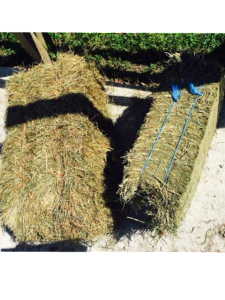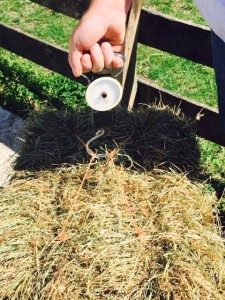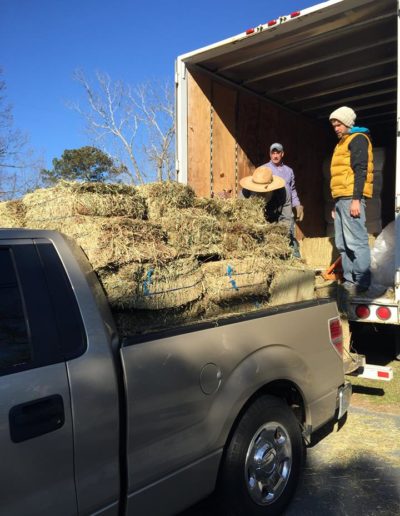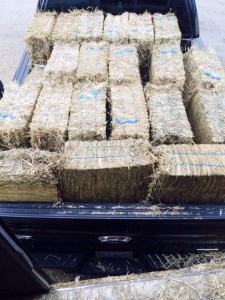Hay Products
Hay Harvesting
The hay is harvested in 3x4x8 foot bales, with little moisture to retain the leaves as most of the protein is contained in the leaves. The Farm has forced air dryers which reduce the hays moisture to 15% moisture content.
The bales are stored in large barns as 1,000 lb bales. When we place our order for hay with the Farm, those bales are broken up, inspected and then compacted into double compressed bales of 80lbs, then cut in half to reach our size bales, for easy handling and storage.
- Double Compressed hay bales, all types of hay, available year round
- Fantastic for handling and storage- gives you twice the room!
- The bales hold the same volume of hay as an average weighted bale of 40lbs.
- Bale average in weight 38-42lbs.
- Hay Analysis comes with each type of hay and for each crop
- Quality and weight are consistent
- Our hay comes on pallets
- We haul our own hay and handle all of our bales to ensure the quality is there for you
Types of hay offered:
- Timothy
- Low Sugar Timothy
- Premium Timothy
- Regular Timothy
- 2nd Cut Orchard
- Orchard / Alfalfa
- Straight Alfalfa
Check with us for current pricing

Double Compressed Bales and a Regular Size Bale, both hold same volume of hay, just a different packaging. Easy storage and handling.

Regular bale of hay weight is 38 lbs

Double Compressed bale weight is 38lbs (blue strings)
Did you know…………….
How much thought do you give to the hay your horse eats?
Equine nutritionists agree that forage, mainly hay and pasture, should make up most if not all of a horse’s diet. The fiber in forage keeps his gut working normally, and forage is a major source of nutrients: energy, protein, vitamins and minerals.
Hay may not provide everything your horse needs, but the more he relies on forage as opposed to grain, the better off he’ll be. Any old hay won’t do, though. What’s right for another horse may not be right for yours.
Hay Analysis
Moisture, the amount of water in the hay: 10 to 17 percent. Below 10 percent, hay tends to be brittle and can be dusty; above 18 percent it may mold, and above 25 percent it may ferment. Fermentation produces heat, which can build to the point of combustion.
Crude protein, the protein concentration: 8 to 14 percent in grass hays, 14 to 17 percent in mixed hays and 15 to over 20 percent in legume hays.
Acid detergent fiber, hard-to-digest components such as cellulose and lignin: 30 to 35 percent. The lower the ADF, the more digestible the nutrients in the hay are. Hay with ADF above 45 percent may have very little nutritional value.
Breakdown of the nonstructural carbohydrates—the sugars and starch. Sugars are reported as ethanol-soluble carbohydrates or water-soluble carbohydrates, depending on how they are extracted. Fructans (plant sugars found in cool-season grasses) are included in WSC. Sugars should be 12% or less in WSC and 10% or less in ESC .











